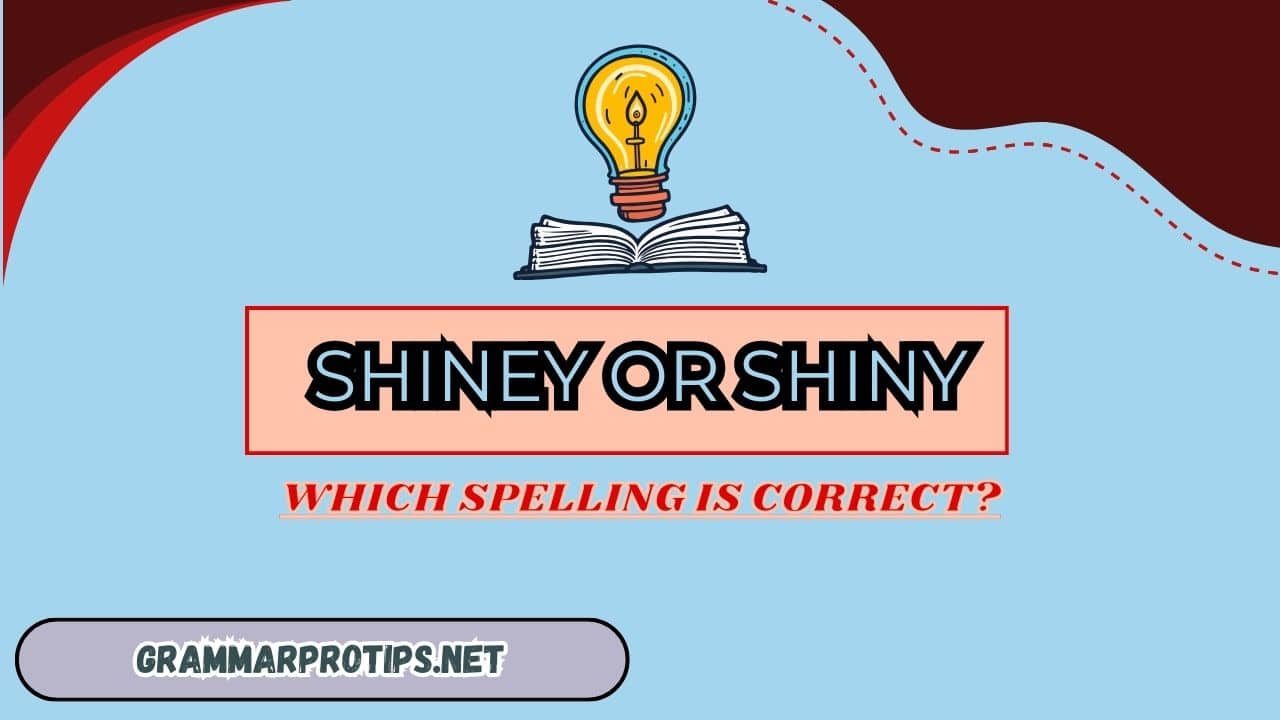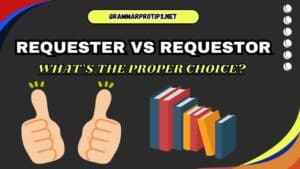Shiney or Shiny: English, known for its quirky spelling rules and exceptions, is a language that often leaves its speakers scratching their heads.
One common confusion is the choice between the spellings “shiney” and “shiny”. Many people, even native English speakers, find themselves asking, “Is it shiney or shiny?”
It seems like such a small detail, but spelling mistakes like this can affect the professionalism of your writing and impact clarity.
This article will answer this question once and for all, providing insights into the correct form, the roots of the confusion, and real-life examples to help you remember which spelling to use.
We’ll also explore the meaning of the word “shiny” and how to use it correctly in various contexts. Let’s dive in!
Understanding the Word “Shiny”
Before addressing the spelling debate, let’s first establish what “shiny” means.
This adjective is used to describe anything that has a reflective surface or something that shines, gleams, or looks glossy.
The word is typically associated with objects or surfaces that are smooth and have a polished, radiant, or lustrous finish.
For example, when a car is freshly waxed, it often has a shiny surface, meaning it’s gleaming and reflective.
Key Characteristics of “Shiny”:
- Glossy: Something that reflects light in a smooth way.
- Polished: Often used for objects or surfaces that have been buffed to a smooth, reflective shine.
- Radiant: Giving off light or appearing to shine brightly.
- Lustrous: Shiny in a way that suggests depth or richness, often used for hair or surfaces.
Examples of “shiny” in sentences:
- The shiny car glistened under the streetlights.
- After a long day, his shoes were still shiny, reflecting the light as he walked.
- She wore a shiny necklace, and it caught everyone’s attention.
The Spelling Debate: “Shiny” vs. “Shiney”
At this point, you might be wondering, why is this even a question? Why do some people spell it as “shiney” instead of “shiny”? Let’s explore the reasons behind this confusion.
The Correct Spelling: “Shiny”
The word “shiny” is the correct and standard spelling of the adjective in both American English and British English.
This is the form that appears in every reputable dictionary, including Oxford English Dictionary, Merriam-Webster, and others.
The word “shiny” is derived from the verb “shine”, and the proper way to form an adjective from verbs ending in “e” is typically to drop the “e” and add “y,” as we see with shiny from shine.
Why “Shiney” is Incorrect
The version “shiney” is a common misspelling that has gained popularity due to the following reasons:
- Phonetic Influence: Some people may assume that since the verb “shine” has an “e” at the end, the adjective form should also retain the “e” (like in “pale” becoming “pale-y”). However, this is not the case.
- Word Confusion: The English language is full of examples where adjectives end with “-ey” or “-y” (e.g., “hairy,” “messy,” “snowy”), and people may wrongly apply this pattern to shine.
However, “shiney” is not a legitimate word according to modern English dictionaries, and its usage is incorrect.
The correct form is “shiny”, and using “shiney” in professional or academic writing could cause readers to question your attention to detail.
Why Spelling Matters
You might think that a small spelling difference between “shiney” and “shiny” doesn’t matter much, but spelling errors, especially with common words, can make your writing appear less credible.
Using the incorrect spelling of a word can undermine your professionalism and attention to detail.
It may also confuse your readers or lead them to think that you’re not familiar with proper English grammar rules.
Spelling Mistakes Impact Professionalism
In formal communication, such as emails, reports, or academic papers, spelling mistakes can detract from your authority.
While “shiny” is easy to spell, the mistaken form “shiney” can make your writing seem sloppy or unpolished.
Imagine sending an email to a client where you accidentally use “shiney” instead of “shiny”. It may appear unprofessional, and that’s not the impression you want to leave.
The Importance of Clarity
Correct spelling is key to clarity in written communication.
In situations where shiny refers to something specific, like shiny shoes or shiny objects, using the right spelling helps the reader understand exactly what you mean.
Incorrect spelling may lead to misunderstandings or confusion, especially in more technical or descriptive contexts.
Common Examples of “Shiny” in Everyday Life
We use the word “shiny” in many everyday situations. Here are some real-life examples that illustrate the different ways we use the word in various contexts.
Example 1: A Professional Email
Imagine you’re sending an email to a colleague about an important business presentation. You want to emphasize the polished look of the slides.
Subject: Final Presentation Design
Hi John,
I’ve completed the final draft of the presentation, and the design is looking great. The shiny surface of the slides should make the text stand out clearly, and the shiny graphics will add visual appeal. I think the overall effect will make a strong impression during the meeting.
Best regards,
Anna
In this email, shiny is used to describe the gleaming or reflective appearance of the slides and graphics.
Using “shiney” here would make the message seem less polished and potentially unprofessional.
Example 2: Casual Texting
In a more informal context, such as texting a friend, you might use “shiny” to describe a new pair of shoes you’ve just bought.
Text Message: Hey Claire, just bought some new shoes! They’re so shiny I can’t wait to wear them tonight. 💫
This sentence showcases the gleaming quality of the shoes, and “shiny” is the appropriate adjective here. Using “shiney” would look odd and out of place in this scenario.
Example 3: Describing a Shiny Car
One of the most common uses of “shiny” is in car care and detailing. When you wax or polish a car, the goal is often to make the surface as shiny as possible.
Example: After spending hours cleaning, the car’s shiny surface looked brand new. The wax gave it that glossy finish that catches everyone’s eye on the road.
How to Remember the Correct Spelling: “Shiny”
To avoid making the common misspelling of “shiney”, it’s helpful to remember a few tricks:
1. Think About the Verb “Shine”
Remember that “shiny” is simply the adjective form of the verb “shine.”
Since the verb ends in “e,” we drop the “e” and add “y” to form the adjective.
It’s a simple rule that can apply to many other words too (like “lazy” from “laze”).
2. Use Memory Aids
Think of words like “rainy”, “snowy”, or “messy”.
They follow the same pattern of dropping the “e” and adding “y.”
This is a helpful mnemonic device to remember the correct spelling of “shiny.”
3. Trust Your Dictionary
When in doubt, always check your dictionary. “Shiny” is the only correct form.
If you use an online dictionary, like Merriam-Webster or Oxford, you’ll find that “shiney” is not listed.
Spelling Patterns: Why Some Words End in “-y” and Others Don’t
Now that we’ve addressed shiny vs. shiney, it’s worth noting that English has some interesting spelling patterns when it comes to adjectives.
Some adjectives are formed by adding “-y” to verbs (like “snowy” or “hairy”), but not all verbs follow this pattern.
For example, “shine” becomes “shiny”, while “dance” becomes “dancy” (incorrect, whereas it should be “dancing”).
Common Adjectives Formed From Verbs:
- Shiny from shine
- Gleamy from gleam
- Icy from ice
- Rainy from rain
Understanding these patterns can help you make educated guesses about how words should be spelled in their adjective form.
Conclusion
The correct spelling is clear: “shiny”. While “shiney” is a common spelling mistake, it’s important to remember that “shiny” is the standard and accepted form.
Whether you’re writing a professional email, drafting a blog post, or texting a friend, using the correct spelling will make your writing more polished and professional.
Key Differences Between “Shiny” and “Shiney”
| Feature | Shiny | Shiney |
|---|---|---|
| Correctness | Accepted in modern English | Incorrect in modern English |
| Dictionary | Listed in major dictionaries | Not listed in dictionaries |
| Meaning | Describes something reflecting light or polished | Not a valid word |
| Spelling Rule | Follows the standard adjective formation from “shine” | Follows no known English rule |
| Use in Sentences | Correct in all professional and casual contexts | Considered an error |
By using shiny in your writing, you ensure clarity, correctness, and a polished tone.
Always remember, a little attention to detail can go a long way in helping you come across as a skilled and careful writer.
Read more knowledgeable blogs on Grammar Pro Tips

Sienna Mauldon is a passionate writer and grammar expert. On her blog, she shares easy-to-follow guides to help readers master grammar rules and improve their writing. With a love for language and teaching, Sienna makes grammar simple and fun for everyone, from beginners to experienced writers.








